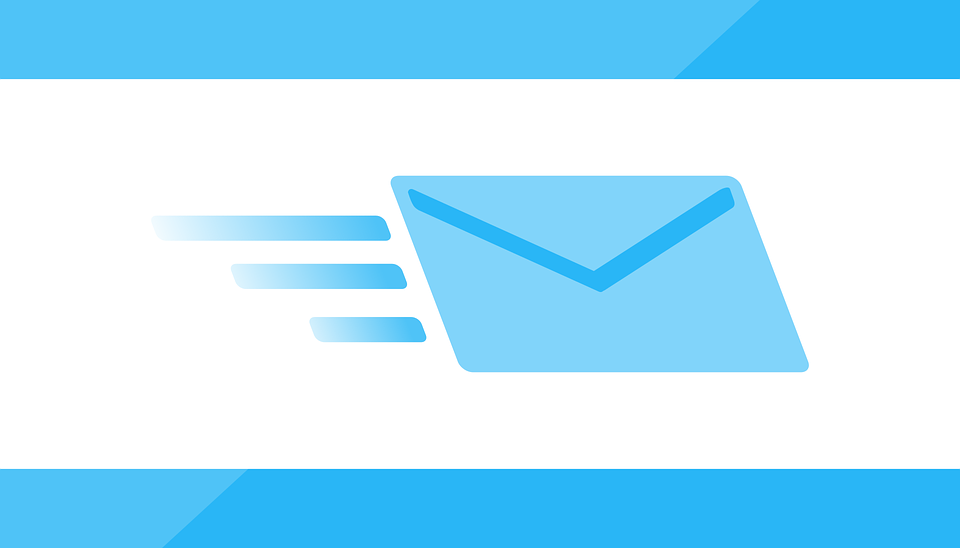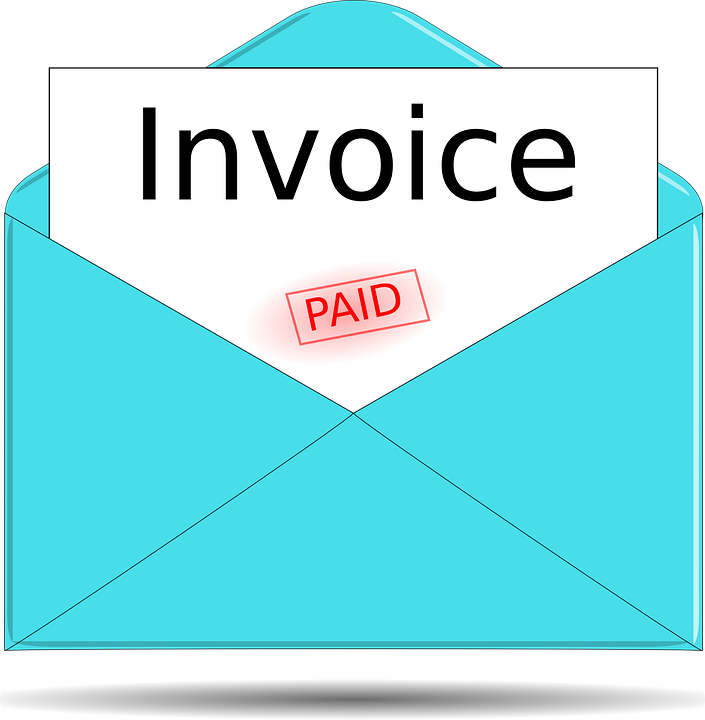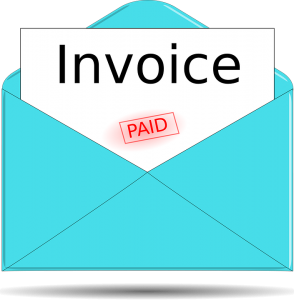
How Quickbooks Can Help Your Small Business Succeed

Quickbooks has become the definitive accounting solution among small business owners. It’s versatile, user friendly, and because it’s backed by Intuit, you can rest assured knowing that it works. Unless you’ve used it, though, you might be wondering how, exactly, Quickbooks can help your small business succeed.
Automatic Expense Recording
With Quickbooks, you don’t have to worry about manually recording all your small business’s expenses. You can take advantage of the software’s automatic expense recording feature. Basically, this involves synchronizing your business-related credit and debit cards to your Quickbooks account. Once sync, Quickbooks will automatically download all transactions from the respective cards, thereby eliminating the need to manually record all your small business’s expenses.
Payroll Management
Along with automatic expense recording, Quickbooks offers integrated payroll management. You can create and schedule paychecks for your business’s employees from within the Quickbooks software. When payday rolls around, your business’s employees will receive their paychecks.
Invoice Generation
You can even use Quickbooks to generate invoices for your small business’s customers or clients. Quickbooks features a built-in invoice generation tool that’s fully customizable. Using it, you can quickly create custom invoices for your small business’s customers or clients.
Inventory Management
If you run a retail business, you’ll be pleased to hear that Quickbooks supports inventory management. As a retailer, inventory management can make or break your small business’s success. If you fail to keep track of your store’s inventory, you may end up with a surplus of products that are difficult to sell. Quickbooks can help you manage your store’s inventory, however.
Desktop and Online Versions Available
You can choose from either the desktop or online version of Quickbooks. Known as Quickbooks Desktop and Quickbooks Online, respectively, they both allow you to easily keep track of all your small business’s revenue and expenses. Quickbooks Desktop, however, is more versatile in terms of features, whereas Quickbooks Online uses cloud technology to ensure a higher level of accessibility. Regardless, you can choose from either the desktop or online version of Quickbooks.
Improves Efficiency
Because of all these features, as well as other features, Quickbooks can improve the efficiency at which your small business operates. You’ll spend less time managing your business’s finances, and as a result, you can focus on tasks directly associated with your small business’s operations.
Have anything else that you’d like to add? Let us know in the comments section below!

How to Edit Paychecks in Quickbooks

Does your business have one or more employees on payroll? If so, you’ll need to compensate them for their labor. Intuit’s popular accounting software, Quickbooks, features a built-in payroll system. Using Quickbooks, you can easily create and send paychecks to your business’s employees. With that said, you may need to edit paychecks before sending them.
Editing Paychecks That Haven’t Been Submitted to Intuit
Assuming you haven’t submitted a paycheck to Intuit yet, you can edit it simply by clicking the “Back” button. Quickbooks’s Payroll Full Service allows you to make changes to your employees’ paychecks before you submit them to Intuit. Just click the “Back” button on the paycheck screen, at which point you can edit the fields.
Editing Paychecks That Have Already Been Submitted to Intuit
If you already submitted a paycheck to Intuit, you can still edit it — you’ll just need to perform a few additional steps. For Payroll Full Service, select “Workers” under the left-hand navigation menu and choose “Employees.” Next, find the employee’s name for whom you are creating the paycheck and click “Paycheck list.” You can then proceed to delete the paycheck, after which you recreate a new paycheck with the correct information.
The Basics of Creating Paychecks in Quickbooks Desktop
Creating paychecks in Quickbooks Desktop is a quick and easy process. Not to be confused with Quickbooks Online, Quickbooks Desktop lives up to its namesake by featuring a localized installation, meaning it’s installed and executed on your computer’s storage drive rather than over the internet.
To create a paycheck in Quickbooks Desktop, pull up the employee for whom you want to create it. Next, access the “Pay Employees tab.” From here, you can click “Create Paychecks” to open the paycheck creation window, followed by starting a scheduled payroll or an unscheduled payroll. After double-checking to ensure the information is correct, you can save and close the window to finish the process.
You can also edit paycheck numbers in Quickbooks. This is done by going back to the main home screen and clicking Banking > Use Register. Next, select the account associated with the paycheck. After opening the paycheck, you should see “Check Number” field, which you can edit to change the paycheck number.
In Conclusion
As your business grows, you may need to hire employees to accommodate its newfound success. Employees are the lifeblood that fuel a successful business’s operations. With that said, it’s important to stay on top of your business’s payroll when hiring and managing employees.
Did this tutorial work for you? Let us know in the comments section below!

Tax Audits: 6 Ways to Lower Your Risk

With April right around the corner, you might be wondering how to lower your risk of being audited by the Internal Revenue Service (IRS). Statistics show the IRS audits about 0.5% of all federal tax returns in any given year. The good news is that you can lower your risk of being audited by following these six tips.
#1) File a Return
You can’t outrun Uncle Sam. If you don’t file a tax return — and you had income that was reported to the IRS for that year — you’ll raise a red flag with the IRS. Upon discovering that you didn’t file a tax return, the IRS may audit you. Therefore, you should always file a tax return to minimize your risk of being audited.
#2) Double-Check Your Income and Expenses
Before filing your tax return, double-check all your income and expenses to ensure the information is correct. If the income reported to the IRS doesn’t match the income on your tax return, the agency may audit you.
#3) Form an LLC or Corp
If you currently operate as an independent contractor or a sole proprietorship, consider forming either a limited liability company (LLC) or a corporation. Research shows independent contractors and sole proprietorships have the highest audit rate. By forming an LLC or a corporation, you can lower your risk of being audited.
#4) Choose the Right Tax Preparer
Don’t underestimate the importance of choosing the right tax preparer. There are thousands of tax preparation businesses in the United States that specialize in preparing, as well as filing, tax returns. Unfortunately, though, not all of them are credible or legitimate. If you choose a questionable tax preparer such as this, they may make mistakes with your return that results in an audit from the IRS.
#5) File Online
You might be surprised to learn that filing your tax return online can lower your risk of being audited. According to Intuit, roughly one in five mail-filed returns have an error, compared to just 0.5% with e-filed returns. The IRS’s e-filing system has safeguards in place to protect against common filing errors. If the system detects an error, it will notify you — or the preparer who’s filing your return — so that you can fix it.
#6) Complete All Required Fields
While this may sound like common sense, it’s worth mentioning that you should complete all required fields on your tax return. Leaving just one field blank is often enough to trigger an audit.
Have anything else that you’d like to share? Let us know in the comments section below!

How to Change Your Email Preferences in Quickbooks

Quickbooks offer seamless email integration so that you can receive copies of invoices, bills and other accounting reports via email. Once configured, Quickbooks will send these reports to your email account where you can easily access them at a later date. First, however, you’ll need to configure your email preferences in Quickbooks to take advantage of this feature.
How to Set Up Quickbooks for Outlook
If you use Microsoft Outlook as your email client, you’ll need to configure Quickbooks to use it. Start by logging in to Quickbooks and once on the home screen, choose “Edit,” followed by “Preferences.” Next, click the “Send Forms” link in the main menu, followed by “My Preferences.” From here, you should be able to select “Outlook” as your default email client. Click “OK” to save and complete the process.
How to Set Up Quickbooks for Webmail
You can configure Quickbooks to use webmail in just a few easy steps as well. If you prefer webmail over Outlook, go back to the Quickbooks home screen and click “Edit,” followed by “Preferences.” Next, click “Send Forms,” after which you can choose “Web Mail” and “Add.” You’ll then be asked to select your webmail provider from a drop-down list of available options. After selecting your webmail provider, you’ll need to enter your email address.
Assuming your webmail is secure, you should tick the option for “Use Enhanced Security.” This option will create a secured tunnel to protect your data from exposure. When finished, click “OK” to save and complete the process.
Troubleshooting Email Problems
You may encounter the following error message when attempting to send emails from Quickbooks to your Outlook account: “QuickBooks is unable to send your email to Outlook.” If this occurs, you’ll need to edit your admin privlidges.
To edit your admin privileges in Quickbooks, you’ll need to locate the Quickbooks.exe file on your computer’s hard drive and view its properties. After locating the file, right-click it and choose “Properties.” From here, you can choose the “Compatibility” tab, followed by unchecking the option for “Run this program as Administrator.” When finished, click “Apply,” followed by “OK.”
The reason for this error message is typically that Quickbooks is set to run in administrator mode. By disabling this option, you shouldn’t encounter the aforementioned error message.
Did this tutorial work for you? Let us know in the comments section below!

6 Cloud Computing Cybersecurity Tips

Does your small business use one or more cloud computing services? When compared to on-premise computing, cloud computing offers a variety of benefits. You can access data on the cloud from any internet-connected device, and you can scale the service up or down to fit your small business’s needs. With that said, you’ll need to implement some cybersecurity measures when using a cloud computing service to protect your small business’s data from theft and exposure.
#1) Choose a Strong Password
Your first line of defense against data theft when using a cloud computing service is a strong password. Avoid using a descriptive password consisting of more or more words. Instead, create an alphanumeric password using numbers, letters and special characters.
#2) Change Your Password
Even if you use a strong password for your cloud computing account, you should get into the habit of changing it on a regular basis. By changing the password at least once every 90 days, you can rest assured knowing that your cloud computing account is secure.
#3) Encrypt Data
Another cybersecurity tip to follow when using a cloud computing service is to encrypt your data. When encrypted, hackers or other unauthorized individuals won’t be able to read your small business’s data.
#4) Run Anti-Virus Software
It’s important to run anti-virus software on your small business’s computers and devices, especially if they are used to access your cloud computing service. Neglecting to install and maintain anti-virus software may result in a malware infection. And depending on the type of malware, it could leave your cloud computing account vulnerable to hacking.
#5) Back Up Data
Don’t forget to back up your data. Even if you store it primarily on the cloud, you should create a back up on a different platform. Relying strictly on a cloud computing service is never a good idea. If the service experiences a data loss event, your data could be permanently deleted, in which case you won’t be able to retrieve it. As long as you have a backup copy, though, you can retrieve and restore it.
#6) Choose the Right Service
Perhaps the most important cybersecurity tip is to choose the right cloud computing service. There are dozens of companies or “vendors” that sell cloud computing services. Unfortunately, not all of them are secure. Some offer greater security than others. By choosing a secure cloud computing service, your small business’s data will be protected against cyber threats.
Have anything else that you’d like to add? Let us know in the comments section below!

Quickbooks: How to Set a ‘Due Date’ for Invoices

Does your business allow customers to pay after their product has been delivered or their service has been completed? If so, you should consider setting a due date for invoices. While the popular accounting software Quickbooks automatically sets a due date for invoices, you can specify your own due date in just a few easy steps. So, how do you set a due date for invoices using Quickbooks?
Steps to Setting a ‘Due Date’ for Invoices
To set a due date for invoices using Quickbooks Desktop, fire up the accounting software and choose Lists > Customers & Vendor Profile Lists > Terms List. Next, click the “Terms” drop-down menu in the upper-left corner and select “New.” From here, you can specify a name for the payments terms, after which you’ll need to choose from one of several types of payment terms.
Quickbooks supports several types of payment terms. Standard, for example, is a traditional format in which the customer has a specific number of days to pay his or her invoice, such as seven days or 14 days. You can also elect to offer customers a discount for paying their invoice within a specific number of days.
Another type of payment terms available in Quickbooks is date driven. As the name suggests, date driven requires customers to pay their invoice by a specific day of the month, such as the 1st or the 29th. Like with standard invoices, date-driven invoices support discounts for early payments. You can encourage customers to pay their invoices earlier by offering them a discount. Even if it’s just a 1% discount, it gives customers an incentive to stay on to their bills so that your business isn’t left with a mountain of unpaid invoices.
After specifying the due date for your business’s invoice, click the “OK” button to complete the process.
Of course, you’ll need to record invoice payments after customers make them. In Quickbooks Desktop, this involves clicking “Receiving Payment” from the home screen, followed by the drop-down menu for “Received From.” You can then scroll through the list of customers until you find the one who made the invoice payment. After locating the customer, enter the payment amount in the “Amount received” field. After verifying the date is correct, select the method of payment the customer used to pay the invoice. You can then choose the invoice that the customer paid, followed by “Save & Close.”
Did this tutorial work for you? Let us know in the comments section below!

How to Promote Your Small Business on Facebook

Reaching over 2.3 billion people globally, Facebook has become the world’s most popular social media network. In the United States, statistics show two in three adults use it regularly. If you run a small business, you should consider using Facebook as a promotional channel. With so many people using it, it’s safe to assume your small business’s target audience actively uses Facebook as well. However, there’s a wrong way and a right way to promote small businesses on Facebook.
Don’t Use Your Profile
What’s wrong with using your Facebook profile to promote your small business? Well, doing so poses several problems, one of which is the fact that users can’t “like” your small business on the social media network. They can befriend your small business by sending a friend request, but users won’t be able to “like” it if you use a profile. More importantly, Facebook’s terms and conditions prohibit businesses from using a profile.
Use a Page
Rather than a profile, you should use a Facebook Page to promote your small business. Unlike profiles, Pages can be used to promote businesses on Facebook. You can set up a Facebook Page for your small business — it’s free by the way — by following this link.
Post Regularly
You can’t expect users to “like” your small business on Facebook unless you post content to your Page regularly. Without content, there’s really no incentive for users to connect with your small business. For an effective Facebook marketing strategy, you should get into the habit of logging in to your Facebook Page to post new content at least twice a week. Of course, you can post content more frequently, but twice weekly is a good starting point for most small businesses.
Share Trending Content
In addition to posting unique content, consider sharing other users’ content on your small business’s Facebook Page. If a particular post is relevant to your small business’s audience, consider sharing it on your small business’s Facebook Page. You can easily share trending content on Facebook by clicking the “share” button, at which point it will appear on your small business’s Facebook Page.
Paid Ads
You can maximize your small business’s visibility on Facebook using paid ads. The social media network offers a paid advertising service known as Facebook Ads. Using this service, you can create custom ads that target specific users o the social media network.
Have any other Facebook marketing tips that you’d like to share? Let us know in the comments section below!

5 Reasons to Consider TSheets for Quickbooks

Does your business have employees on payroll? Whether its workforce consists of two employees or 200 employees, you’ll need to track how long they work. Known as employee time tracking, it’s an essential step to running a business with employees.
With that said, you don’t have to perform employee time tracking manually. If you use Quickbooks, you can simplify the process using TSheets. Available for both Quickbooks Desktop, as well as Quickbooks Online, it’s a highly versatile time-tracking solution. Below are five reasons to consider TSheets for Quickbooks.
#1) Cuts Payroll Costs
Using Tsheets for Quickbooks can save your business money on payroll costs. According to Intuit, businesses that use TSheets save an average of 6% on their payroll costs. With TSheets, you’ll know exactly how long each of your employees worked, allowing for more transparent and accurate time tracking.
#2) Mobile Time Tracking
TSheets support mobile time tracking. In other words, your business’s employees can “clock in” and “clock out” using their smartphone or other mobile device. You don’t have to use physical time sheets, nor do you have to use other archaic and ineffective time-tracking solutions. TSheets for Quickbooks supports mobile time tracking so that your business’s employees can clock in and out with ease.
#3) Run Reports
You can also run reports in real time using TSheets for Quickbooks. Because the time-tracking solution is offered by Intuit, it can be integrated into Quickbooks. Once integrated, you can then run reports to streamline your business’s accounting. This is just one more reason to consider TSheets for Quickbooks.
#4) Track Billable Time
While primarily used for employee time tracking, TSheets supports other functions, including billable time tracking. If your business sells a service — or multiple services for that matter — you may need to track how time you and your employees spend performing the service so that you can bill clients for the appropriate amount. Known as billable time tracking, it’s a native feature included in TSheets for Quickbooks.
#5) Free Trial
If you’re still on the fence about TSheets, you can try it for free. As of writing this, Intuit is offering a 14-day free trial for new subscribers. There’s no obligation, and you don’t even to submit a credit card. Rather, you can test out TSheets for 14 days to see whether it’s right for your business. Check out the official TSheets website here to learn more about Intuit’s employee time-tracking solution.
Have anything else that you’d like to add? Let us know in the comments section below!

What Is a Closing Entry in Accounting?

Creating closing entries is an essential step in business accounting. Each year, you’ll typically need to create journal entries to convert temporary accounts into permanent accounts. Known as “journal entries,” they allow you to close your business’s books for that year. In case this is your first time hearing about closing entries, keep reading to learn more about them and how they work.
Overview of Closing Entries
A closing entry is a journal entry that moves the balances of temporary accounts to those of permanent accounts. Closing entries are designed to reset the balances of your business’s temporary accounts. If the collective balance of your business’s temporary accounts is $25,000, creating closing entries for those accounts will reset them to $0 for the following fiscal year.
In business accounting, there are temporary accounts as well as permanent accounts. Revenue and expenses, for example, are temporary accounts, whereas permanent accounts consist of balances that extend beyond one fiscal year, such as assets and liabilities.
At the end of a fiscal year, you should move the balances of your business’s temporary accounts into permanent accounts by creating journal entries for them — an accounting process that’s known as creating closing entries.
After creating closing entries, you’ll typically want to check the post-closing trial balance. Doing so will allow you to verify the closing entries are correct.
How to Create Closing Entries in Quickbooks
Assuming you use Quickbooks Desktop, you won’t have to manually create closing entries. Intuit’s popular desktop-based accounting software creates closing entries automatically.
As explained on the official Quickbooks website, Quickbooks Desktop performs automatic income and expense accounts at the end of your specified fiscal year. When the new fiscal year rolls around, all your business’s temporary accounts, including those with income and expense, will have a $0 balance, allowing you start off on the right foot.
Closing entries are nothing more than journal entries that move the balance of your business’s temporary accounts into those of permanent accounts. They are used to reset temporary accounts at the end of a fiscal period, essentially making them $0 for the following fiscal period. Hopefully, this gives you a better understanding of closing entries and how they work. Of course, you won’t need to create them manually if you use Quickbooks Desktop, as the accounting software performs this accounting process automatically on your behalf.
Have anything else that you’d like to add? Let us know in the comments section below!

Quickbooks Classes vs Types: What’s the Difference?

As your business grows, its financial records will grow with it. Conventional wisdom should you to believe that the more products or services your business sells, the more transactions — both income and expenses — you’ll have to record for it. In Quickbooks, there are several ways to organize and track related segments of your business’s financial records, the most common of which include the use of classes and types. Unless you’re familiar with them, though, you might be wondering how classes and types differ from each other. Below, you’ll learn more about the nuances between classes and types in Quickbooks.
What Are Classes?
In Quickbooks, classes are used to categorize and track transactions. If you run a chain of retail stores, for example, you may want to create a separate class for each location in which your business’s stores operate. With location-based classes such as this, you’ll be able to see exactly which locations drive the most revenue and which locations drive the least revenue.
Of course, there are countless other ways to use classes in Quickbooks. A landscaping company, for instance, may set up a class for residential landscaping services and a class for commercial landscaping services. By separating residential and commercial services into separate classes, the landscaping company will have a better idea of which audience generates the most revenue.
To create a class, log in to Quickbooks and, from the main menu, click “Lists,” followed by “Class List.” Towards the bottom of the page, you should see an option for “Class.” Click this link and select “New” to create the new class.
What Are Types?
Types, on the other hand, are used to categorize and track customers, vendors or jobs. As a business owner, you probably have multiple customers, vendors and/or jobs. Rather than grouping them all together, you can separate them using types. Types work like classes by allowing you to categorize and track elements of your business’s financial records. The difference is that classes are used to track transactions, whereas types are used to track customers, vendors or jobs.
To create a type in Quickbooks, log in to the accounting software and, from the main menu, select “Lists,” followed by “Customer & Vendor Profile Lists.” Next, choose the type that you’d like to create, at which point you can follow the instructions.
Keep in mind that you won’t see types on your transactions. They’ll only appear in your internal records.
Have anything else that you’d like to add? Let us know in the comments section below!
